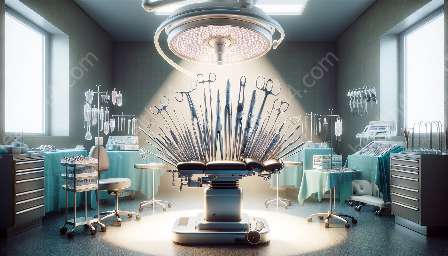When it comes to surgical procedures, precision and accuracy are paramount. An essential tool that helps surgeons achieve these qualities is the scalpel. Scalpels are an integral part of surgical instruments and medical devices and equipment, playing a crucial role in various medical procedures.
What is a Scalpel?
A scalpel is a small and extremely sharp bladed instrument used for surgery, anatomical dissection, and various medical procedures. It consists of a handle and a blade, which is typically made of stainless steel or high-grade disposable materials. The blade's sharpness allows for precise incisions and cuts with minimal tissue damage, making it an indispensable tool in the field of surgery.
Types of Scalpels
There are several types of scalpels, each designed for specific purposes:
- Disposable Scalpels: These scalpels have a fixed blade that is disposed of after a single use. They are commonly used to reduce the risk of cross-contamination and infection.
- Reusable Scalpels: These scalpels have a handle that can be detached from the blade, allowing for the blade to be sharpened or replaced.
- Electric Scalpels: These scalpels use an electrical current to simultaneously cut and cauterize tissue, offering a precision cutting and hemostasis.
- Laser Scalpels: These scalpels use a high-intensity light beam to cut and coagulate tissue, minimizing blood loss and promoting faster healing.
Importance of Scalpels in Surgical Instruments
Scalpels play a crucial role in surgical instruments due to their precision and ability to make clean, accurate incisions. They are used in a wide range of surgical procedures, including:
- General Surgery: Scalpels are used for making incisions, excisions, and other tissue manipulations in procedures such as appendectomies, cholecystectomies, and hernia repair.
- Orthopedic Surgery: Scalpels aid in performing procedures such as joint replacements, fracture repair, and spine surgery with precision and minimal tissue disruption.
- Neurosurgery: In delicate procedures such as brain and spinal cord surgeries, scalpels are essential for precise dissection and excision of abnormal tissue.
- Cardiothoracic Surgery: Scalpels are used to access the heart and lungs for procedures such as bypass surgery, valve repair, and tumor resections.
Scalpels in Medical Devices and Equipment
Scalpels are an integral part of medical devices and equipment, contributing to the success and safety of various medical procedures. They are often included in surgical kits and packs, ensuring that healthcare providers have access to the necessary tools for performing surgery and other medical interventions.
Advancements and Innovations in Scalpels
As technology and medical knowledge advance, scalpels continue to evolve with innovative features and designs. Advancements include:
- Enhanced Blade Materials: Scalpel blades are being developed with improved materials and coatings to enhance sharpness, durability, and resistance to corrosion.
- Ergonomic Handles: New designs focus on the handle's ergonomics for improved grip, comfort, and control during surgical procedures.
- Integrated Safety Features: Some disposable scalpels now include safety mechanisms to prevent accidental injuries and reduce the risk of bloodborne pathogen exposure.
Conclusion
The scalpel remains a cornerstone of surgical instruments and medical devices and equipment, offering unparalleled precision and utility in the hands of skilled healthcare professionals. From its various types to its indispensable role in surgical procedures, the scalpel continues to be a vital tool in modern medicine, contributing to successful surgeries, improved patient outcomes, and advancements in medical care.


